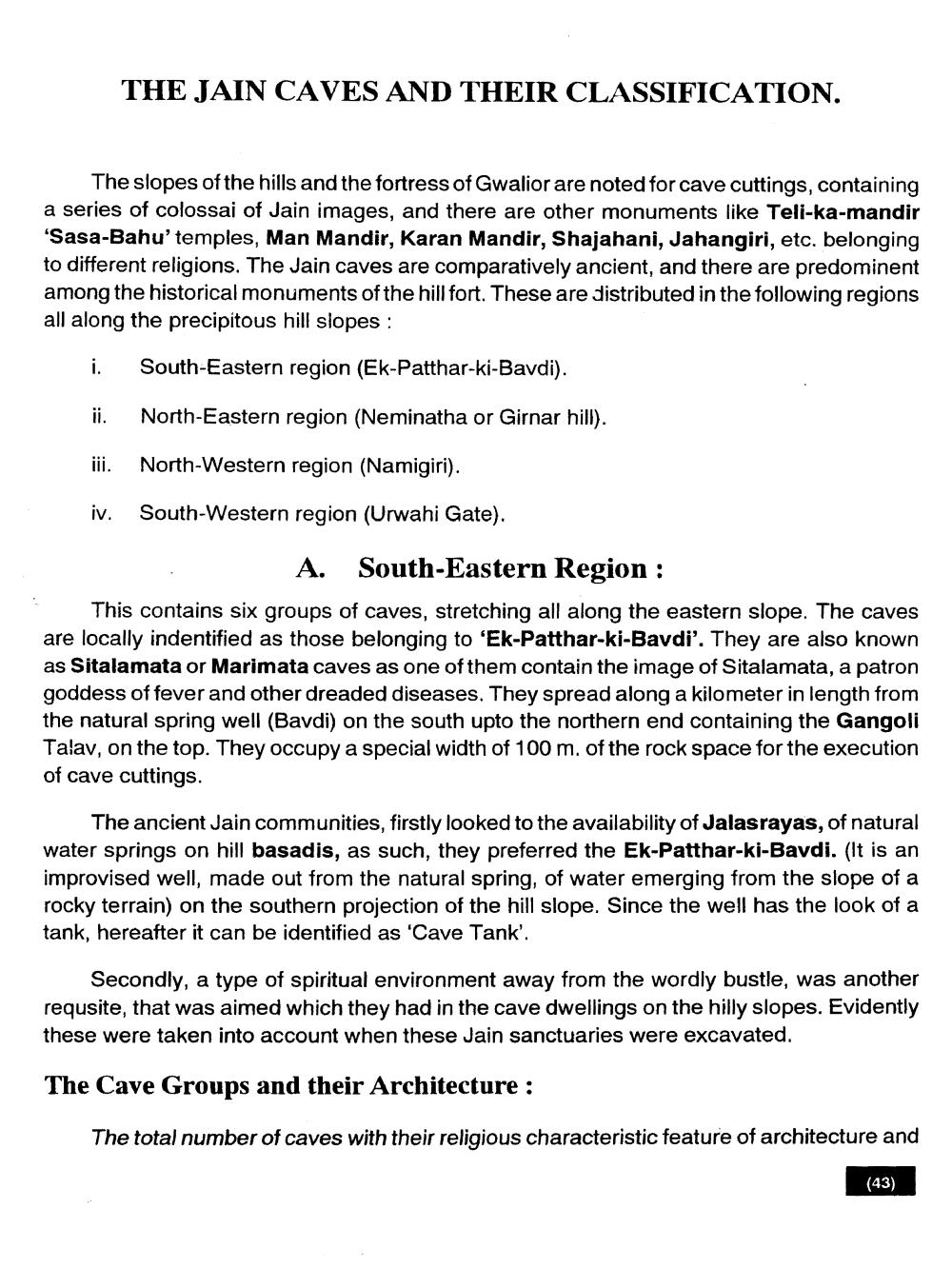________________
THE JAIN CAVES AND THEIR CLASSIFICATION.
The slopes of the hills and the fortress of Gwalior are noted for cave cuttings, containing a series of colossai of Jain images, and there are other monuments like Teli-ka-mandir 'Sasa-Bahu' temples, Man Mandir, Karan Mandir, Shajahani, Jahangiri, etc. belonging to different religions. The Jain caves are comparatively ancient, and there are predominent among the historical monuments of the hill fort. These are distributed in the following regions all along the precipitous hill slopes :
i.
South-Eastern region (Ek-Patthar-ki-Bavdi).
ii.
North-Eastern region (Neminatha or Girnar hill).
North-Western region (Namigiri).
iv. South-Western region (Urwahi Gate).
A. South-Eastern Region : This contains six groups of caves, stretching all along the eastern slope. The caves are locally indentified as those belonging to 'Ek-Patthar-ki-Bavdi'. They are also known as Sitalamata or Marimata caves as one of them contain the image of Sitalamata, a patron goddess of fever and other dreaded diseases. They spread along a kilometer in length from the natural spring well (Bavdi) on the south upto the northern end containing the Gangoli Talav, on the top. They occupy a special width of 100 m. of the rock space for the execution of cave cuttings.
The ancient Jain communities, firstly looked to the availability of Jalasrayas, of natural water springs on hill basadis, as such, they preferred the Ek-Patthar-ki-Bavdi. (It is an improvised well, made out from the natural spring, of water emerging from the slope of a rocky terrain) on the southern projection of the hill slope. Since the well has the look of a tank, hereafter it can be identified as 'Cave Tank'.
Secondly, a type of spiritual environment away from the wordly bustle, was another requsite, that was aimed which they had in the cave dwellings on the hilly slopes. Evidently these were taken into account when these Jain sanctuaries were excavated.
The Cave Groups and their Architecture :
The total number of caves with their religious characteristic feature of architecture and
(43)




